CTGF increases matrix metalloproteinases expression and subsequently promotes tumor metastasis in human osteosarcoma through down-regulating miR-519d
- PMID: 25003330
- PMCID: PMC4116521
- DOI: 10.18632/oncotarget.1998
CTGF increases matrix metalloproteinases expression and subsequently promotes tumor metastasis in human osteosarcoma through down-regulating miR-519d
Erratum in
-
Correction: CTGF increases matrix metalloproteinases expression and subsequently promotes tumor metastasis in human osteosarcoma through down-regulating miR-519d.Oncotarget. 2020 Jan 28;11(4):492. doi: 10.18632/oncotarget.27459. eCollection 2020 Jan 28. Oncotarget. 2020. PMID: 32064054 Free PMC article.
Abstract
Osteosarcoma, the most common primary malignant bone tumor, shows potent capacity for local invasion and distant metastasis. Connective tissue growth factor (CTGF/CCN2), a secreted protein, binds to integrins, modulates invasive behavior of certain human cancer cells. Effect of CTGF in metastasis of human osteosarcoma is unknown. We found overexpression of CTGF increasing matrix metalloproteinases (MMPs)-2 and MMP-3 expression as well as promoting cell migration. MicroRNA (miRNA) analysis of CTGF-overexpressed osteosarcoma versus control cells probed mechanisms of CTGF-mediated promotion of migration. Among miRNAs regulated by CTGF, miR-519d was most downregulated after CTGF treatment. Co-transfection with miR-519d mimic reversed CTGF-mediated MMPs expression and cell migration. Also, MEK and ERK inhibitors or mutants reduced CTGF-increased cell migration and miR-519d suppression. By contrast, knockdown of CTGF diminished lung metastasis in vivo. Clinical samples indicate CTGF expression as linked with clinical stage and tumor metastasis. Taken together, data show CTGF elevating MMPs expression and subsequently promoting tumor metastasis in human osteosarcoma, down-regulating miR-519d via MEK and ERK pathways, making CTGF a new molecular therapeutic target in osteosarcoma metastasis.
Conflict of interest statement
The authors have no financial or personal relationships that could inappropriately influence this research.
Figures
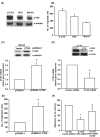

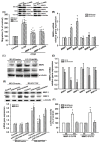
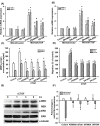
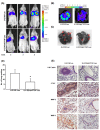
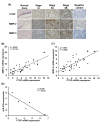
References
-
- Link MP, Goorin AM, Miser AW, Green AA, Pratt CB, Belasco JB, Pritchard J, Malpas JS, Baker AR, Kirkpatrick JA, et al. The effect of adjuvant chemotherapy on relapse-free survival in patients with osteosarcoma of the extremity. The New England journal of medicine. 1986;314(25):1600–1606. - PubMed
-
- Hayden JB, Hoang BH. Osteosarcoma: basic science and clinical implications. Orthop Clin North Am. 2006;37(1):1–7. - PubMed
-
- Hattinger CM, Pasello M, Ferrari S, Picci P, Serra M. Emerging drugs for high-grade osteosarcoma. Expert Opin Emerg Drugs. 2010;15(4):615–634. - PubMed
-
- Meyers PA. Muramyl tripeptide (mifamurtide) for the treatment of osteosarcoma. Expert Rev Anticancer Ther. 2009;9(8):1035–1049. - PubMed
Publication types
MeSH terms
Substances
LinkOut - more resources
Full Text Sources
Other Literature Sources
Medical
Miscellaneous

